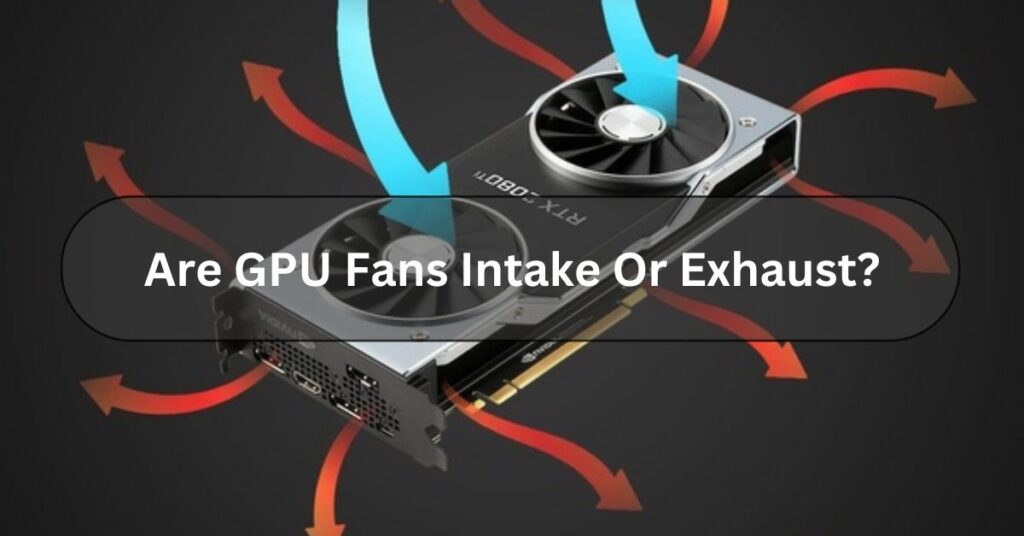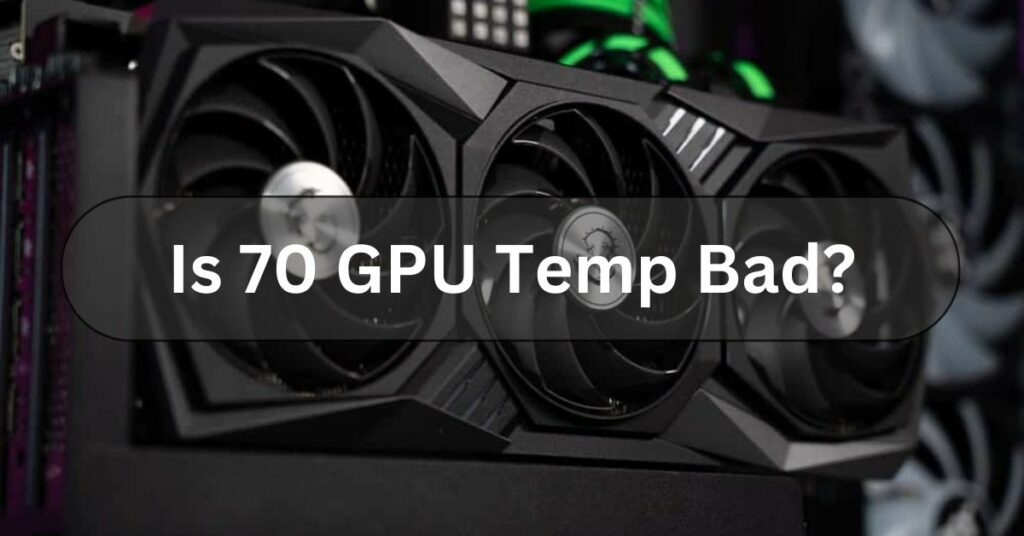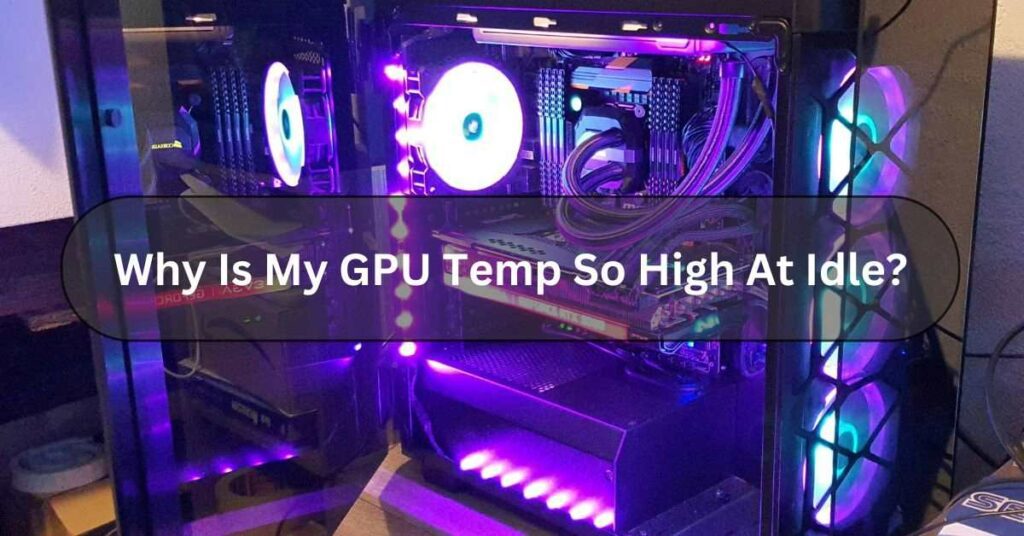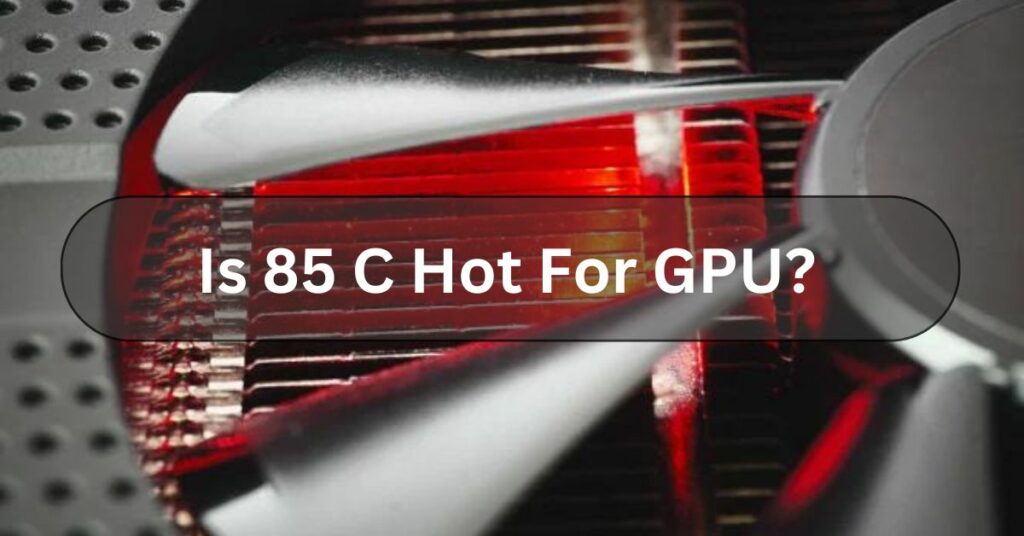When I first started building my own computer, I was puzzled by many things, and one question that really got me thinking was: “Are GPU Fans Intake Or Exhaust?” It may seem like a small detail, but understanding how these fans work can make a big difference in how well your computer runs.
GPU fans can work in different ways. Some GPUs have blower-style coolers that push hot air out of the computer case, while others have open-air coolers that pull cool air into the case.
In this article, I will share my personal experience and what I learned about GPU fans. Whether you’re a beginner like I was or just curious, I hope this clarifies things for you.
Understanding GPU Fans – The Essentials!
What Are GPU Fans?
GPU fans are small cooling devices on a computer’s graphics processing unit (GPU). They keep the GPU cool while working hard on gaming or video editing tasks. If not cooled properly, GPUs can get very hot and slow down or damage themselves. GPU fans blow air over the GPU to carry away heat, ensuring it runs smoothly.

There are different types, like single, dual, or triple fans and blower fans, which push air out of the computer case. In short, GPU fans are essential for keeping your GPU cool and your computer running efficiently.
Read Also: Is Minecraft CPU Or GPU Intensive?
Intake Vs. Exhaust Fans Of GPU – The Core Difference!
Understanding the difference between intake and exhaust fans is crucial for keeping a system running smoothly when cooling a GPU.
Here Is A Simple Breakdown Of What These Fans Do And Why They Are Important:
Intake Fans:
- Purpose: Intake fans pull cool air from outside the computer case into the case.
- Location: These fans are usually found at the front or bottom of the case.
- Function: They bring in fresh air to help lower the temperature inside the case. The GPU and other components can then use this cooler air.
- Importance For GPU: Intake fans ensure that the GPU has a steady supply of cooler air, which helps it operate more efficiently and avoid overheating.
Exhaust Fans:
- Purpose: Exhaust fans expel hot air from inside the computer case to the outside.
- Location: These fans are typically located at the back or top of the case.
- Function: They remove the hot air generated by the GPU and other components, preventing heat buildup inside the case.
- Importance For GPU: Exhaust fans help maintain a cooler overall temperature inside the case by removing hot air, which benefits the GPU by reducing the risk of thermal throttling (where the GPU slows down to prevent overheating).
Read Also: Is 74c Bad For GPU?
How Does A GPU Fan Work? – Here To Know!
A GPU fan is a small but important part of your computer. It helps keep the GPU cool. The GPU handles tasks like playing games and watching videos, which makes it heat up.
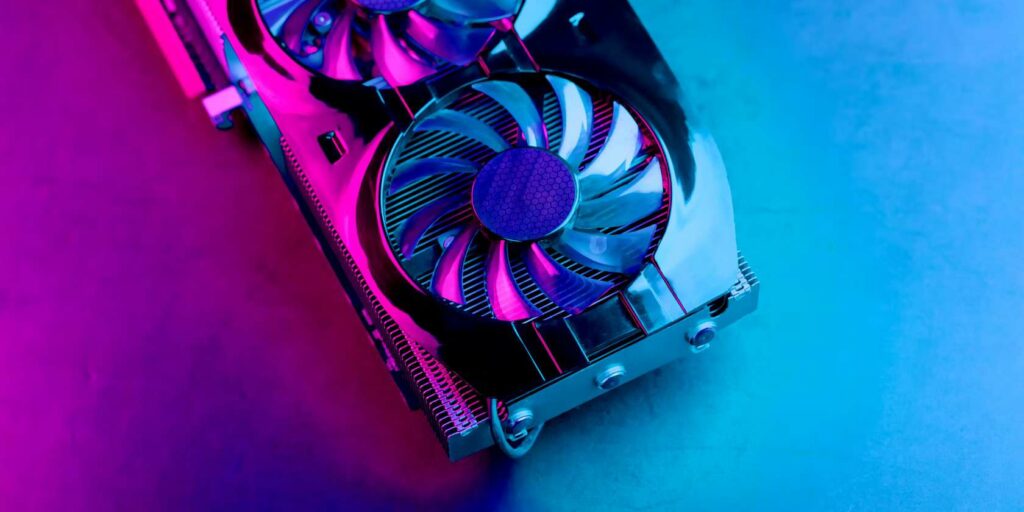
Here Is How The Fan Works:
Sensing Heat: The GPU has sensors that check its temperature. These sensors tell the fan to start spinning when it gets too hot.
Spinning The Fan: The fan starts spinning to cool the GPU. It spins faster if the GPU is very hot and slower if it’s just a bit warm.
Blowing Air: As the fan spins, it pushes air over the GPU, helping to cool it down, similar to blowing on hot soup to cool it off.
Removing Hot Air: The fan helps move hot air out of the computer case, keeping the whole system cooler.
Automatic Control: Modern GPU fans can adjust their speed automatically based on the GPU’s temperature. Some fans even stop spinning when the GPU is cool to save energy and reduce noise.
The Role Of GPU Fans In Cooling Systems!
GPUs are critical computer components, especially for gaming, video editing, and other graphic-intensive tasks. Like all electronics, GPUs produce heat when they operate. They can slow down, malfunction, or even damage themselves if they get too hot. This is where GPU fans become important.
Why Cooling Is Important?
When a GPU works, it processes a lot of data and performs many calculations. This heavy workload generates heat. If the GPU gets too hot, its performance can drop and, in severe cases, stop working. Proper cooling helps maintain the GPU’s performance and prolongs its lifespan.
How Do GPU Fans Work?
GPU fans are designed to keep the GPU cool by moving air across its surface, which helps dissipate the heat.
They Work Like This:
- Airflow: The fan blows air onto the GPU’s heatsink, which is a metal component that absorbs heat from the GPU. The moving air carries the heat away from the heatsink, cooling it down.
- Heat Dissipation: As the air flows over the heatsink, it picks up the heat and moves it away from the GPU. This process keeps the GPU at a safe operating temperature.
Types Of GPU Cooling Systems:
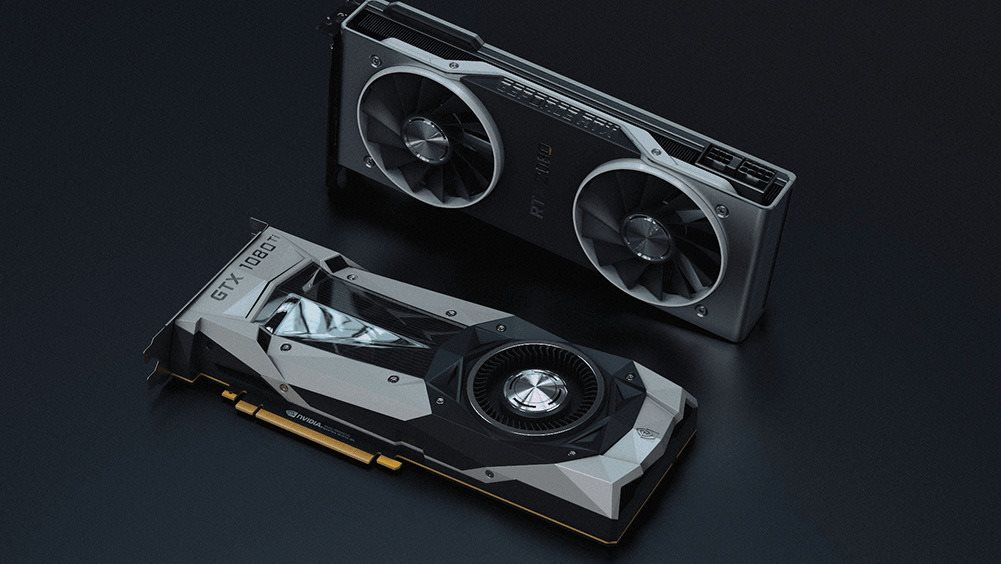
There Are A Few Different Cooling Systems Used For GPUs, Including:
- Air Cooling: This is the most common method; one or more fans blow air over the heatsink. It’s simple and effective for most users.
- Liquid Cooling: This method uses a liquid coolant to absorb heat from the GPU, which is then cooled by a radiator and fan system. It’s more efficient than air cooling and is often used in high-performance gaming PCs and workstations.
- Hybrid Cooling combines air and liquid cooling for even better performance, ensuring the GPU stays cool under heavy loads.
Factors Affecting Fan Performance:
Several Factors Can Influence How Well A GPU Fan Cools The GPU:
- Fan Size: Larger fans can move more air, which helps cool the GPU more effectively.
- Fan Speed: Faster fans can provide better cooling but can also be noisier. Most modern GPUs allow you to adjust the fan speed based on temperature.
- Case Ventilation: Good airflow within the computer case is essential. Properly placed intake and exhaust fans can help keep the air moving and prevent heat buildup.
Maintenance Tips For GPU Fans:
To Keep Your GPU Fans Working Well, Regular Maintenance Is Important:
- Cleaning: Dust can accumulate on the fans and heatsink, reducing effectiveness. Use compressed air to clean them regularly.
- Monitoring: Use software tools to monitor your GPU temperatures. If they are consistently high, check the fans for dust or obstructions.
- Upgrading: If your GPU often gets too hot, consider adding more fans to your case or upgrading to a better cooling solution.
Read Also: Is 100% GPU Usage Bad?
In Which Direction Air Flow Through A GPU?
It is important to know how air moves through a graphics card. In many GPUs, air goes from the front to the back. The card’s fan brings in cool air from the front of your computer, moves it over the heatsink to take away heat from the GPU, and then pushes out the hot air from the back of the card and out of the computer. This keeps the GPU cool and stops it from getting too hot.
Are GPU Fans Intake Or Exhaust?
GPU fans usually blow hot air out of the graphics card. They bring in cool air from outside the computer case. This cool air cools down the graphics card parts.

After that, the fans push the hot air out of the case. Some graphics cards have fans that pull cool air into the card itself. But most graphics cards use fans that blow hot air out.
Blower Vs. Open-Air Coolers – Detailed Comparison!
| Feature | Blower Style Coolers | Open-Air Coolers |
| Airflow Direction | Exhaust | Intake |
| Best For | Small Cases, Compact Builds | Larger Cases, High-Airflow Setups |
| Noise Level | Generally Louder | Quieter |
| Cooling Efficiency | Effective in confined spaces | More efficient in well-ventilated cases |
GPU Fans As Intake – Pros And Cons!
Using GPU fans as intake means directing them to pull air into the computer case instead of expelling it.
Here Are The Pros And Cons Explained Simply:
Pros:
- Cooling Efficiency: Intake fans can provide cooler air directly to the GPU, potentially improving its cooling performance.
- Positive Air Pressure: Helps maintain positive air pressure inside the case, which can reduce dust buildup by pushing air out through other vents.
Cons:
- Heat Buildup: If intake fans are not balanced with exhaust fans, they may increase the overall temperature inside the case, potentially affecting other components.
- Dust Accumulation: Intake fans can bring in more dust and debris from outside the case, requiring more frequent cleaning to maintain optimal airflow.
GPU Fans As Exhaust – Pros And Cons!
GPU fans can be used as exhaust fans in a computer system.
Here Are The Pros And Cons Explained Simply:
Pros:
- Efficient Cooling: GPU fans are designed to cool the graphics card, which generates a lot of heat during operation. Using them as exhaust can help dissipate heat from the computer case.
- Space Saving: Since GPUs already have fans, utilizing them as exhaust means you don’t need additional fans, saving space inside the case.
- Cost-Effective: You won’t need to purchase extra exhaust fans, which can save money.
Cons:
- Limited Airflow: GPU fans are primarily designed to cool the graphics card. Using them as exhaust may provide less airflow than dedicated case fans, potentially leading to higher overall temperatures inside the case.
- Noise: Graphics card fans can be noisy under heavy loads. I am using them as exhaust, as they might increase overall noise levels compared to quieter case fans.
- Aesthetic Concerns: Some users prefer the look of case fans designed for exhaust purposes, which can be more aesthetically pleasing than GPU fans.
Read Also: GPU Junction Temperature
How Do I Know If My PC Fan Is Intake Or Exhaust?
When you look inside your computer case, you can determine if a fan is intake or exhaust by checking its direction.

Here Is An Easy Way To Tell:
- Direction Of Airflow: Take a close look at the fan blades. They are curved in a specific way to push air in one direction. If the blades face the inside of your computer case, it is an intake fan. This means it pulls air from outside into the case to cool your components.
- Position In The Case: Another clue is where the fan is placed. Intake fans are usually positioned where they can draw in cool air from the outside, such as at the front or bottom of the case.
- Exhaust Fans: On the other hand, exhaust fans expel hot air from inside the case. Their fan blades will be curved to push air towards the outside of the case. You will often find exhaust fans at the back or top of the computer case.
Frequently Asked Questions:
1. Are GPU Fans Supposed To Be Intake Or Exhaust?
Most GPU fans do both. They pull in cool air and blow out hot air at the same time. Think of them as mini air conditioners for your computer parts. This helps keep your GPU nice and cool while it’s working hard.
2. Do Your GPU Fans Intake Air Or Exhaust Air?
GPU fans are designed to exhaust air. This means they push hot air out of the graphics card and away from the GPU to help keep it cool.
3. Is It Better To Put A Case Fan To Blow Under The GPU Or Above It?
Generally, it’s better to put a case fan under the GPU. This way, the fan can push cool air directly to the GPU, which helps keep it from overheating. Blowing air from above might not be as effective because hot air naturally rises, so it’s better to have the fan push cool air from below.
4. Can I Change The Direction Of My GPU Fans?
Yes, you can change the direction of your GPU fans, but it might be complicated. GPU fans are typically arranged to keep the GPU as cool as possible. To change the direction, you would need to physically modify the fans or the cooling system, which can be tricky and might void your warranty. Instead, it’s better to focus on improving your overall PC airflow.
5. How Do I Know If My GPU Is Overheating?
To know If Your GPU Is Overheating, Check For These Signs:
- High Temps: Use software to monitor GPU temperature; above 85°C (185°F) is too hot.
- Poor Performance: Slow computer, laggy games, or crashes.
- Loud Fans: Fans running loudly all the time.
- Visual Glitches: Seeing strange visuals on your screen.
- Unexpected Shutdowns: The computer shuts down on its own.
6. What Is The Best Way To Improve GPU Cooling?
To improve GPU cooling, ensure good airflow in your computer case, clean out dust regularly, and check that fans work well. Adding extra fans or using liquid cooling can also help.
Conclusion:
In Conclusion, GPU fans can work as intake or exhaust, depending on their design and setup. They often act as intake fans, pulling cool air in to keep the GPU from overheating. However, some GPU fans are designed to push hot air out of the case, working as exhaust fans. The key is to ensure good airflow in your computer case to keep all the components cool and working efficiently.
Read Also:
Is XFX A Good GPU Brand?
What Is The Average GPU Temp While Gaming?
How To Control GPU Fan Speed?

